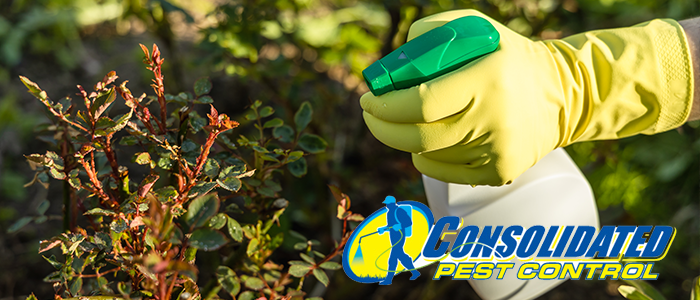
Beware of the Uninvited Guests: The Dangers of Government Building Pests
Pests infestations in government buildings can cause significant damage, not just to the infrastructure, but also to the occupants. The presence of pests can lead to threats to human health, damage and destruction of property, and a tarnished reputation for the government agency. As such, it is imperative to prevent government building pests.
Consolidated Pest Control provides comprehensive pest control and lawn fertilization services to prevent, manage and eliminate pest infestations in government buildings. In this article, we will discuss the dangers of pests in government buildings and the measures that can be taken to prevent them.
Section 1: Common Government Building Pests
Several pests are commonly found in government buildings, including rodents, cockroaches, ants, bed bugs, fleas, ticks, termites, and stinging insects. These pests present serious dangers to the health and wellbeing of the building occupants. Rodents and cockroaches may contaminate food and water sources, transmit diseases, and damage the building’s structures.
Bed bugs and fleas are parasitic pests that feed on blood, potentially causing severe skin reactions and allergic reactions. Termites are a silent menace that can cause considerable damage to the structure of the building, leading to costly repairs.
Section 2: Threats to Human Health
The presence of pests in government buildings poses significant threats to human health. Pests like rodents, cockroaches, and bed bugs can transmit diseases through their droppings, urine, and bodily secretions. Tick and flea bites can cause allergic reactions and spread diseases like Lyme disease and Rocky Mountain spotted fever. Stinging insects like bees, wasps, and hornets can cause severe allergic reactions and even death in some cases.
Section 3: Damage and Destruction of Property
Pests can cause considerable damage and destruction to property. For example, termites can destroy the structural integrity of the building, weakening it over time. Rodents and cockroaches can chew on electrical wiring, causing potential fire hazards. Bed bugs and fleas can damage the building’s furniture and carpets, leading to costly replacements.
Section 4: Tarnished Reputation
The presence of pests in government buildings can lead to a tarnished reputation. Customers or clients may assume that the building is dirty and unsanitary, causing distrust and decreased use of the services provided.
This can significantly impact the government agency’s reputation and credibility, causing long-term damage to its operations.
Section 5: Prevention Measures for Government Building Pests
Preventing pest infestations in government buildings is critical. Here are some measures that can be taken to prevent pests from entering the building:
- Regular inspections: Regular inspections by pest control professionals can help identify potential pest problems before they become major issues.
- Sanitation: Proper sanitation practices, including regular cleaning and maintenance, can help eliminate potential pest breeding grounds.
- Routine maintenance: Regular maintenance of the building’s structures and utilities can help prevent pests from entering the building.
- Seal openings: Sealing openings in the building, such as cracks or gaps in windows and doors, can help prevent pests from entering the building.
Section 6: Pest Control Solutions
In case of pest infestations, it is imperative to take immediate action. Consolidated Pest Control provides comprehensive pest control solutions to eliminate pest infestations effectively. Our services include:
- Inspection and identification of pests: Our experienced pest control professionals can identify the type of infestation and devise an effective solution.
- Treatment: We utilize the latest pest control methods and products to eliminate pests effectively.
- Prevention: Our pest control professionals can provide preventive measures to prevent future pest infestations.
Section 7: Integrated Pest Management (IPM)
Integrated Pest Management (IPM) is an effective and sustainable approach to pest control. It focuses on preventing pest infestations by utilizing multiple control methods, including physical, biological, and chemical control methods. IPM programs are environmentally responsible and can help reduce the use of pesticides. Consolidated Pest Control provides customized IPM programs tailored to government agency needs.
Section 8: Benefits of Choosing Consolidated Pest Control
Consolidated Pest Control has extensive experience in providing comprehensive pest control solutions to government agencies. Here are some benefits of choosing our services:
- Experience: Our team of pest control professionals has extensive experience in managing and eliminating pest infestations in government buildings.
- Customized solutions: We provide customized solutions tailored to the specific needs of government agencies.
- Sustainability: We provide environmentally responsible pest control solutions that are sustainable.
- Customer service: We are committed to providing exceptional customer service, ensuring customer satisfaction.
Section 9: Conclusion for Government Building Pests
Pest infestations in government buildings can lead to significant damage and threats to human health. The presence of pests can damage the building’s infrastructure, tarnish the agency’s reputation, and cause long-term damage to its operations. To prevent pest infestations, government agencies should take preventive measures and seek the help of professional pest control services.
Consolidated Pest Control provides comprehensive pest control solutions, including customized IPM programs, to eliminate pest infestations effectively. Contact us today for all your pest control needs.








